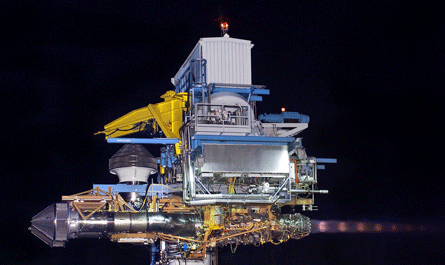Pratt & Whitney has unveiled a new cost-reduction goal as the F135 engine programme nears the end of a seven-year testing phase that was partly marred by cost overruns.
The 250th F135 delivered for the Lockheed Martin F-35 will match prices with the less powerful F119 installed on the Lockheed F-22, says Bennett Croswell, P&W vice-president of F135 and F119 engine programmes.
Croswell's pledge comes less than 18 months after P&W launched a "war on cost" because the joint programme office expressed concerns about creeping prices.
A key concern focused on the F135 programme's learning curve, a statistical model that predicts how efficiency improves as output rises. A 100% learning curve is a bad sign, meaning that efficiency is not improving. The F135's learning curve 18 months ago was about 94%, or 6% higher than government officials wanted.
 |
|---|
© Pratt & Whitney |
The company has improved dramatically since last July. Croswell says the learning curve on the F135 programme is now 88%, which is the government's target rate. With 10 production engines delivered so far, the F135 is "staying right on that curve", he adds.
That suggests P&W understands how engine costs will evolve over the next several years as production orders are expected to surge, he adds.
Croswell declines to provide either the current price for the F135 or F119 engines, so it is not clear how much cost reduction is necessary for P&W to reach its cost target with the delivery of the 250th F135 engine.
Two independent reviews completed last year - one by the joint assessment team and the other by the AT Kearney consultancy - concluded P&W's cost reduction plan was "aggressive but achievable", Croswell says.
The F-22 is powered by two F119s, while the F-35 is powered by either the F135 or the General Electric/Rolls-Royce F136 alternate engine. Compared with the F119, the F135 is about 680kg (1,500lb) heavier and produces about 20% more thrust, Croswell says.
"For an engine that weighs more and produces a lot more thrust, that's a pretty dramatic cost reduction," says Ed O'Donnell, P&W director of international programmes and business development.
Initial service release for the F135-PW-600, which powers the F-35B short take-off and vertical landing variant, is expected in December. The milestone will complete a battery of ground and rig tests launched in October 2003 with the F135-PW-100, the engine that powers the F-35's conventional take-off and landing and carrier-based variants.
During that period, P&W overcame a design flaw that caused a turbine blade to wear out too quickly. But concerns remained about the company's ability to reduce the cost of the engine as production orders started to ramp up.
Source: Flight International























